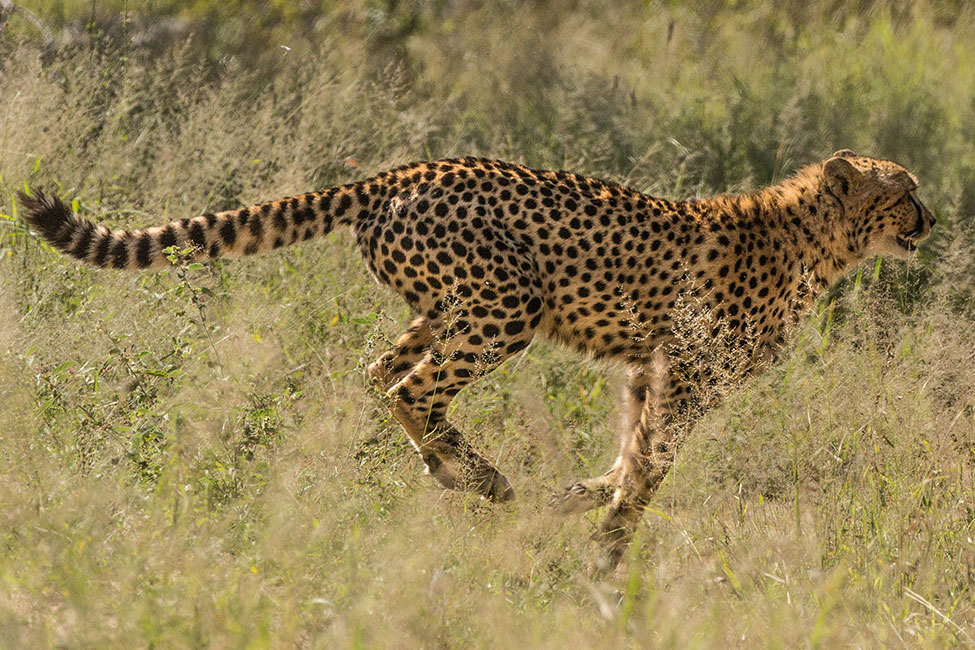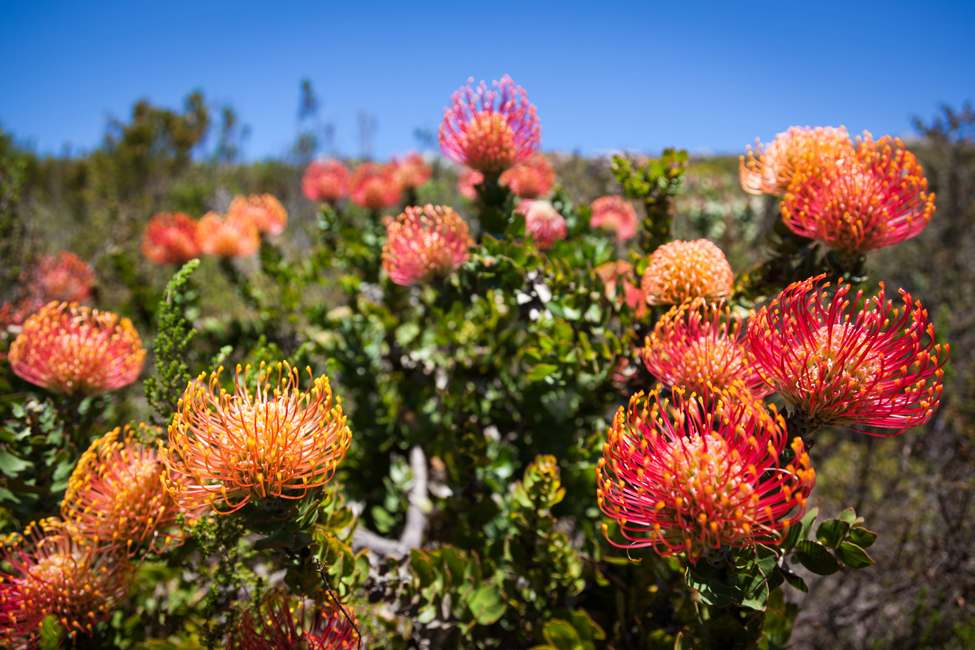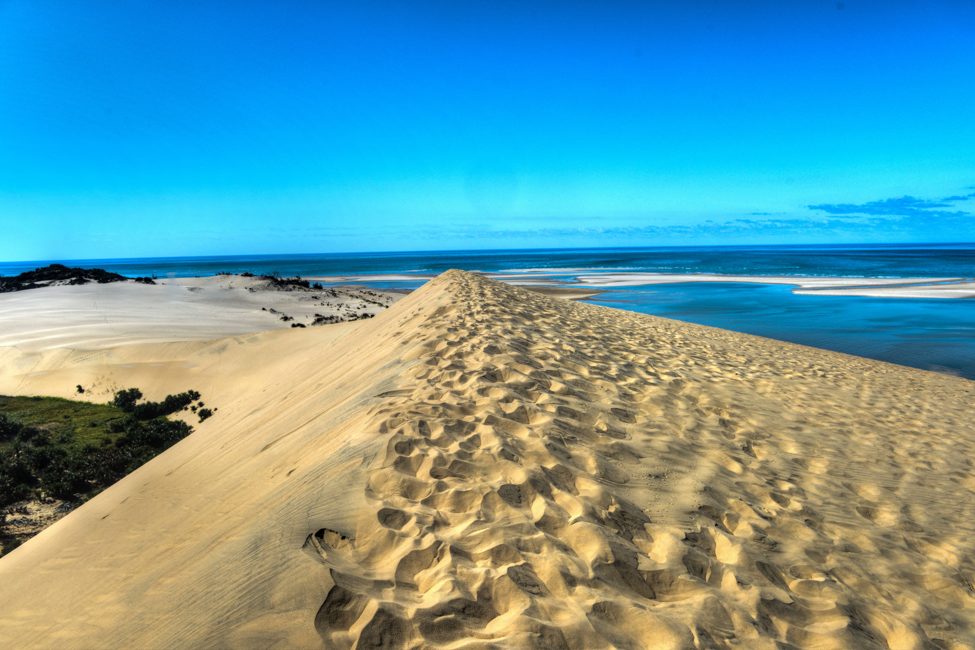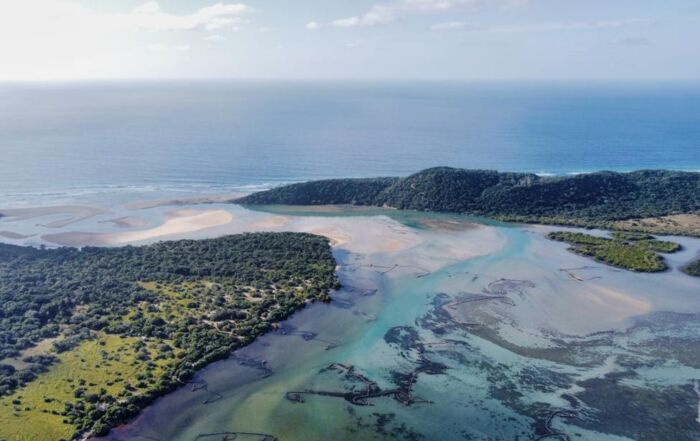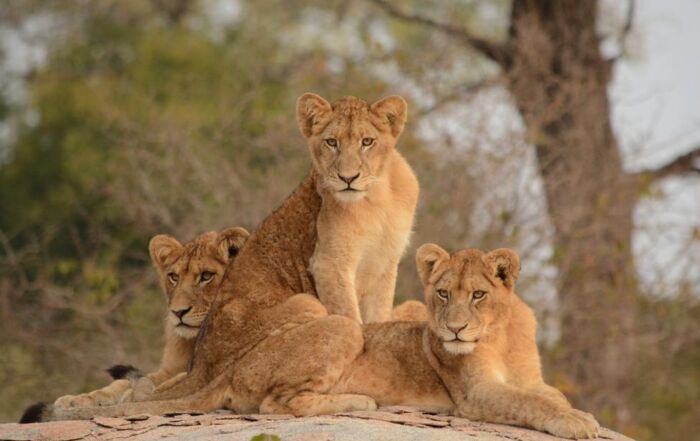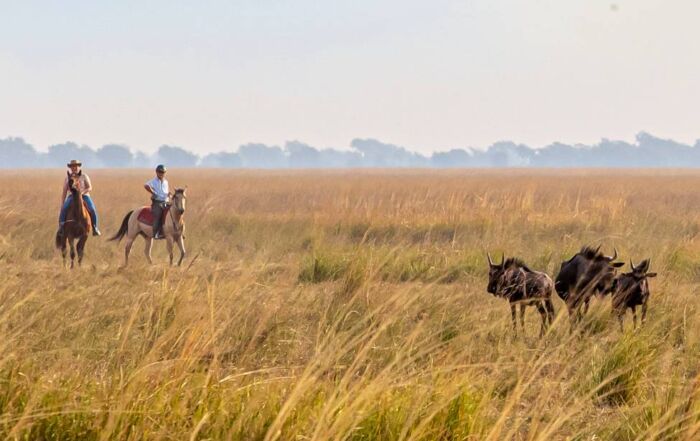Quintessential Africa: Kruger National Park
Covering more than 7,500 square miles, Kruger National Park is among the world’s largest national parks. Visitors can look forward to fantastically diverse scenery and an impressive array of animals. The park is home to elephants, zebras, giraffes, rhinos, and close to 150 mammal species in total—more than in any other African park!
Founded in 1926, Kruger National Park was South Africa’s first national park. Located in the country’s northeast, it shares a border with Zimbabwe in the north and Mozambique in the east. While Kruger is enormous by itself, it is part of an even larger natural area double its size: the Great Limpopo Transfrontier Park, which also includes Zimbabwe’s Gonarezhou National Park and Mozambique’s Limpopo National Park.
Stretching 220 miles south to north, Kruger National Park encompasses a variety of fascinating ecosystems. In addition to wildlife, the park is home to archaeological sites and rock art. You can learn about the area’s prehistoric past, enjoy family-friendly and luxury accommodations, go on game drives, experience a hot air balloon ride, or take multi-day hikes on designated camping trails. A visit to Kruger National Park is unforgettable.
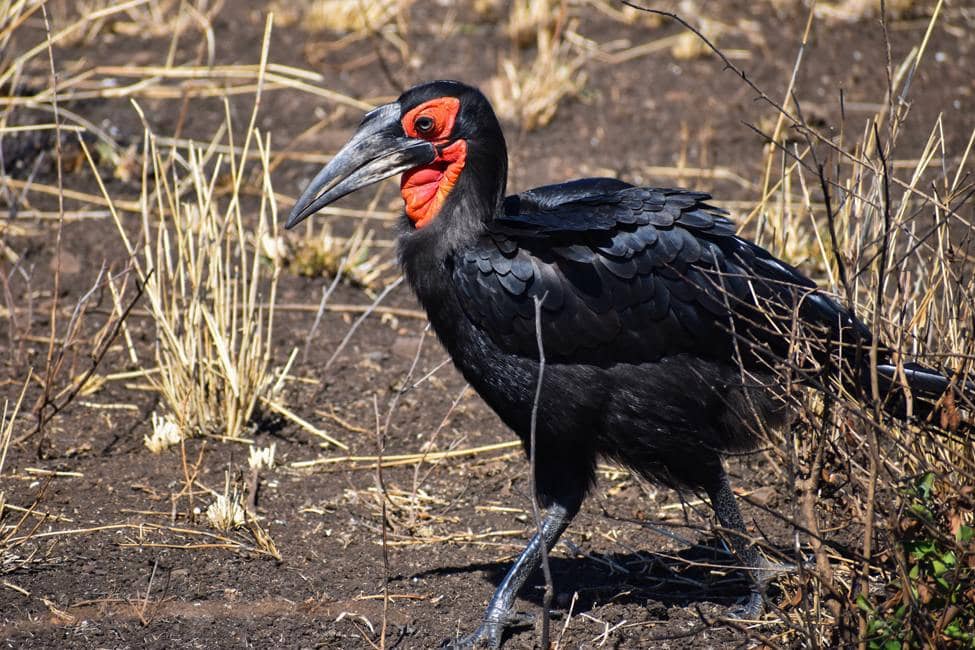
The ground hornbill is one of Kruger National Park’s “Birding Big Six.” Photo by Nadine Venter.
The Wildlife of Kruger National Park
Kruger National Park is famous for its Big Five mammals: elepants, lions, leopards, rhinos, and Cape buffalos. But those are just a few of the many large animals you can find in Kruger. Giraffes, hippos, plains zebras, cheetahs, spotted hyenas, Nile crocodiles, and endangered African wild dogs are also big draws.
That’s not to mention the many antelope species found here, such as blue wildebeest, bushbuck, common eland, greater kudu, hartebeest, impala, mountain reedbuck, nyala, roan, sable, and waterbuck.
Birds are another draw—Kruger National Park hosts more than 500 species. About half of these species live in Kruger year-round, while the other half visit the park as seasonal migrants or nomads. South African National Parks has designated a handful of resident birds as “the Big Six”: the ground hornbill, kori bustard, lappet-faced vulture, martial eagle, saddle-billed stork, and Pel’s fishing owl. The first five of these large birds are fairly easy to find in most areas of the park. The Pel’s fishing owl is more of a challenge because it is active at night.
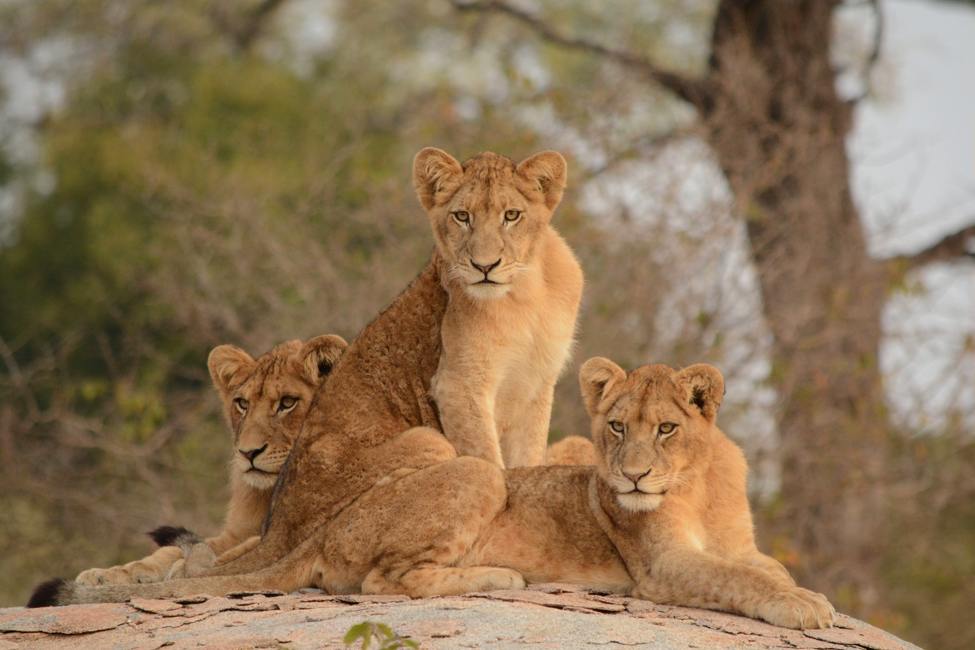
Young lions rest on a rock in Kruger National Park. Photo by Diego Morales.
Southern Kruger
The southern part of Kruger National Park is easily accessible by road and air. The ‘Southern Circle’ near the park’s southeastern entry gate, Crocodile Bridge, grows lush grasses that feed white rhinos, zebras, Cape buffalos, and impalas and other antelopes. In turn, these large grazing herds attract predators such as cheetahs, African wild dogs, and lions—with different lion prides displaying an array of hunting techniques and behaviors.
The Crocodile River marks the southern border of the park and is an attraction on its own. In addition to the namesake crocodiles, you can see hippos swimming in these waters, look for animals like elephants and waterbucks gathering on the banks to graze and drink, and find colorful shorebirds wading in the shallows.
Most of the park’s hundred-plus San rock art sites are located in southern Kruger. These paintings of people and wildlife were made by the San people. Most range in age from 1,500 to 3,000 years old, and it is believed the paintings were made to record events, to pass on knowledge, and as part of spiritual traditions. The park is also home to a handful of San rock carvings.
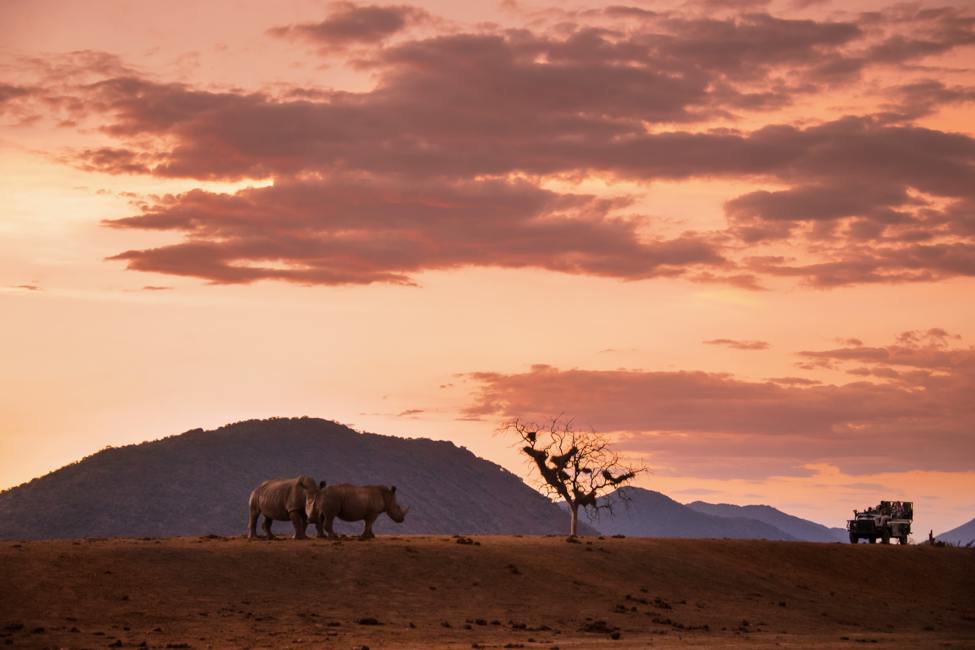
Safari goers watch rhinos on a game drive in Kruger National Park in South Africa.
Northern Kruger
Northern Kruger is more remote than the southern part, with fewer visitors. Baobob, mopane, and fever trees dot the dry landscape. In addition to the Big Five and other large animals, in the north you can also find Samango (Sykes) monkeys, bushpigs and Sharpe’s grysboks. The area has several hides for birdwatching and a 500-year-old archaeological site called Thulamela.
The Makuleke Concession, a vast triangle between the Limpopo and Luvuvhu rivers, comprises one percent of the Kruger National Park’s land but a mind-boggling 75 percent of its biodiversity. It doesn’t take much luck to see herds of elephants, as well as Cape buffalos, leopards, and other large mammals that regularly visit the area. Nature walks provide the chance to acquaint yourself with local plants and birds.
Private Reserves of Greater Kruger National Park
Along the boundaries of Kruger National Park lie many private reserves that extend the wild. These reserves offer luxury accommodations and unique activities that are restricted in Kruger National Park itself, such as night-drive safaris, guided nature walks, and game drives in open-top vehicles. Thank you
Reserves enjoyed by Ujuzi travelers include Sabi Sand Private Game Reserve, Thornybush Private Game Reserve, and Timbavati Private Nature Reserve. Because the private reserves strictly limit the number of visitors, they have a more secluded feel, and you may go exploring all day without coming across another group of travelers.
Sabi Sand Private Game Reserve
When it was established, Sabi Sand was South Africa’s only private nature reserve. Covering 250 square miles off the southwest corner of Kruger National Park, it features savannah interspersed with waterholes, woodlands, and the Sabi and Sand rivers. Here, you are likely to see the Big Five as well as cheetahs, zebras, giraffes, and a variety of antelopes. Several lion prides have territories in the Sabi Sand area and are regularly seen on game drives. The fascinating social structure of the spotted hyena can also be clearly observed in the Sabi Sand.
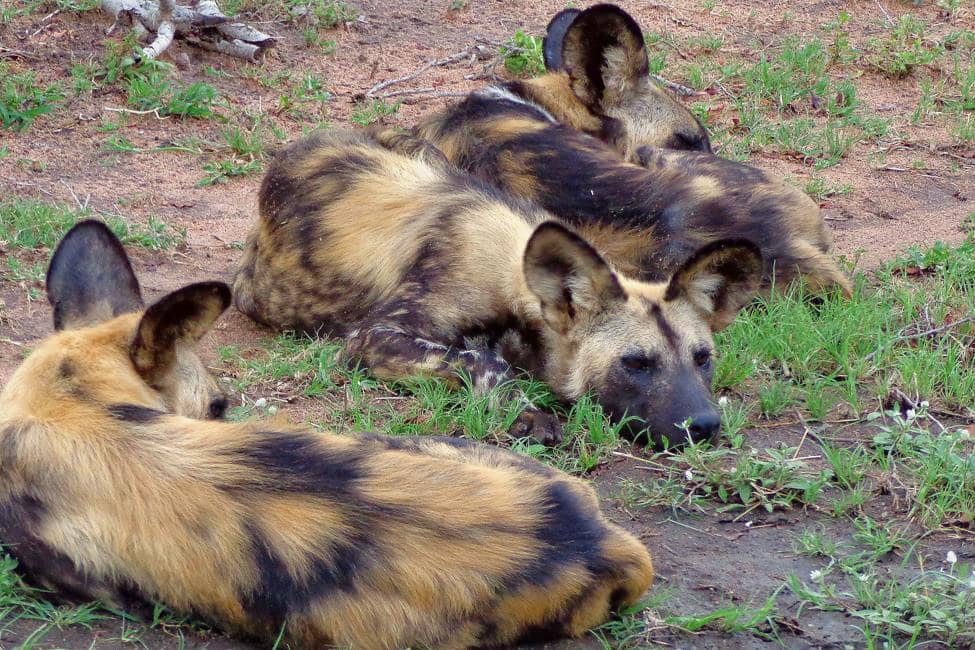
African wild dogs nap on Timbavati Reserve in the Greater Kruger National Park. Photo taken by Kathryn Kingsbury on an Ujuzi safari.
Thornybush Private Game Reserve
The stunning Thornybush Game Reserve protects more than 50 square miles of open savannah, woodlands, and shrublands. Located centrally on the western border of Kruger, no fences run between it and the park. This allows for wildlife to roam freely back and forth.
At Thornybush, you can find the Big Five, as well as giraffes, mongoose, zebras, pangolins, and many more.
Timbavati Private Nature Reserve
Timbavati is famous for its packs of African wild dogs—multicolored canines more closely related to Ethopian wolves than to domestic dogs. The African wild dog is endangered, with only a few thousand left in the wild. These creatures are highly social, living and hunting in groups. Few things are as exhilarating as watching a pack of African wild dogs chase their prey.
Lions are plentiful in Timbavati, and sometimes you can see one or two white lions among them. White lions are the same species as other African lions and live in prides with them. They get their color from a recessive gene, similar to the process that gives some humans blue eyes. White lions are typically born to normally colored lions, and they often have golden or brown offspring as well.
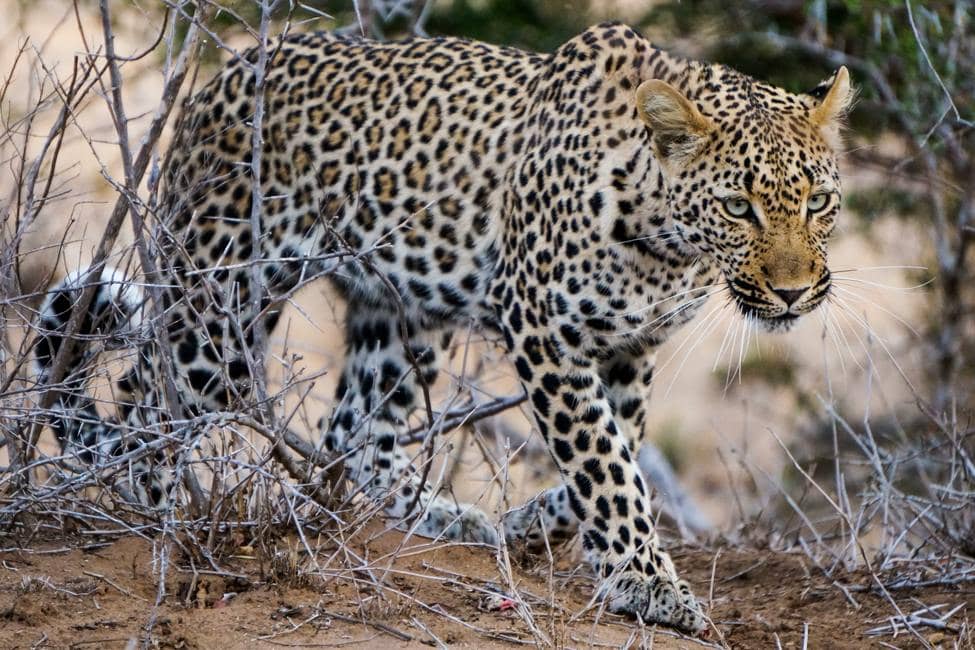
A leopard stalks through the brush in Kruger National Park. Photo by Geoff Byron.
Weather and When to Visit
Kruger National Park encompasses 220 miles from north to south, so the climate varies. But it is generally hot and semi-arid throughout. The southern part of the park is about 3°F to 5°F cooler than the north and has more rainfall.
Winter (May through October) is the most popular time of year to visit the park. Days are sunny, dry, and temperate, while nights can get chilly, with temperatures as low as 40°F. September and October are the driest months.
From November to April, rain is more common. It tends to come in short, heavy bursts, but there can also be days in a row with no rain. The lush grasses can sometimes make it more difficult to spot animals, but there is still plenty of excellent viewing to be had. With fewer visitors at the park during this time of year, many safari-goers prefer visiting Kruger during the rainy season.
Plan Your Kruger National Park Safari
For all the reasons listed above, Kruger National Park is a popular destination for Ujuzi travelers. It’s a must-see on any South African safari. And since it’s right on the border with Zimbabwe and Mozambique, Kruger National Park can be easily included as part of a multi-country safari, as well.
Contact Ujuzi to make your travel dreams come true.
Sign up for the Ujuzi Newsletter!
From top travel tips to innovative safaris and conservation movement, get inspired to plan your next African safari!
By submitting this form, you are consenting to receive marketing emails from: . You can revoke your consent to receive emails at any time by using the SafeUnsubscribe® link, found at the bottom of every email. Emails are serviced by Constant Contact


